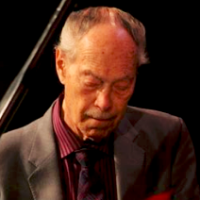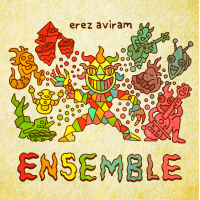Home » Jazz Musicians » Bengt Hallberg
Bengt Hallberg
Bengt Hallberg is, without doubt, one of the most influential pianists in the history of Swedish jazz. In his Encyclopedia of Jazz, Leonard Feather called him “his country’s foremost jazz pianist,” praising his “unique, light-fingered style, exceptionally effective in single note lines on medium tempi.”
Throughout the 1950s he played not only with all the most important domestic stars of the idiom, most notably baritone saxophonist Lars Gullin and altoist Arne Domnérus, but with American visitors such as Stan Getz, with whom he cut a recording of an old Swedish folk tune, “Ack Värmeland du sköna." This became a hit when released in the U.S. as “Dear Old Stockholm”. In January 1954, the Swedish jazz magazine Estrad named him “musician of the year.”
Miles Davis would refer to him in interviews as one of his favorites but it was with Davis’s great rival Clifford Brown that Hallberg played in a famous late night jam session in Gothenburg. He went on to record an album with “Brownie” for Prestige.
Born (appropriately) on the west coast, in Sweden’s second city Gothenburg, Hallberg was just 15 years old when he cut his first record as part of a group fronted by bassist Thore Jederby and from 1949 to 1954 he was pianist and principal arranger for drummer Kenneth Fagerlund’s band, playing three nights a week at Vauxhall, a Gothenburg dance venue.
In the spring of 1950, at the tender age of 17, while still in high school, he shared first prize in a competition for young composers in the European classical tradition and made his first trio recordings. He would frequently make the then six-hour train journey to the Swedish capital Stockholm for recording sessions or radio work then return the same day so as to be back at school next morning.
In 1953 he was elected “jazz musician of the year” by the Stockholm bebop venue Nalen and the following year the Gothenburg newspaper Ny Tid awarded him 1,000 kronor for being “internationally acclaimed as instrumentalist and composer in spite of his young age,” the first time such a prize had been given to a jazz musician.
Starting out emulating Teddy Wilson, Hallberg rapidly became hooked on bebop, with Bud Powell as his personal favorite. He then fell heavily under the influence of pianist Lennie Tristano and so-called “cool jazz.”
However, he would also on occasion play boogie woogie and dance music, including many traditional Swedish favorites, for which he would switch from piano to accordion.
Read moreTags
Terje Rypdal: Odyssey: In Studio and In Concert

by John Kelman
To achieve confluence, an artist must first demonstrate multiplicity. With the benefit of hindsight, the meeting of disparate concepts might appear inevitable when reassessing a decades-long career, but few artists actually possess not only the building blocks but the intuition and acumen to achieve what is, in Sanskrit, called Sangam. That ECM has two recordings using that very name—Trygve Seim's sublime 2004 meshing of rigorous form and controlled freedom, and Charles Lloyd's similarly successful 2006 marriage of cross-cultural concerns--is but ...
Continue ReadingBengt Hallberg: All-Star Sessions 1953 / 54

by Jack Bowers
By 1953-54, when these sessions were recorded in Stockholm, pianist Bengt Hallberg had been a resplendent star on the Swedish jazz scene for more than half a dozen years. Unremarkable, one might surmise, until he learns that Hallberg turned twenty-two on September 13, 1954, by which time he had already won a nationwide competition for young composers and recorded with such American stars as saxophonist Stan Getz and trumpeter Clifford Brown.
Hallberg was a fifteen-year-old high ...
Continue ReadingBengt Hallberg RIP

Source:
Rifftides by Doug Ramsey
Bengt Hallberg, honored as one of the finest pianists in modern jazz, died today in Uppsala, Sweden, of congestive heart failure. He was 80 years old. Hallberg’s keyboard touch and harmonic inventiveness came to the attention of musicians and listeners outside his native Sweden on Stan Getz’s 1951 recording of the traditional song “Ack Värmeland du sköna,” released in the US as “Dear Old Stockholm.” He made a further impression internationally with his playing on Quincy Jones arrangements for Clifford ...
read more
























